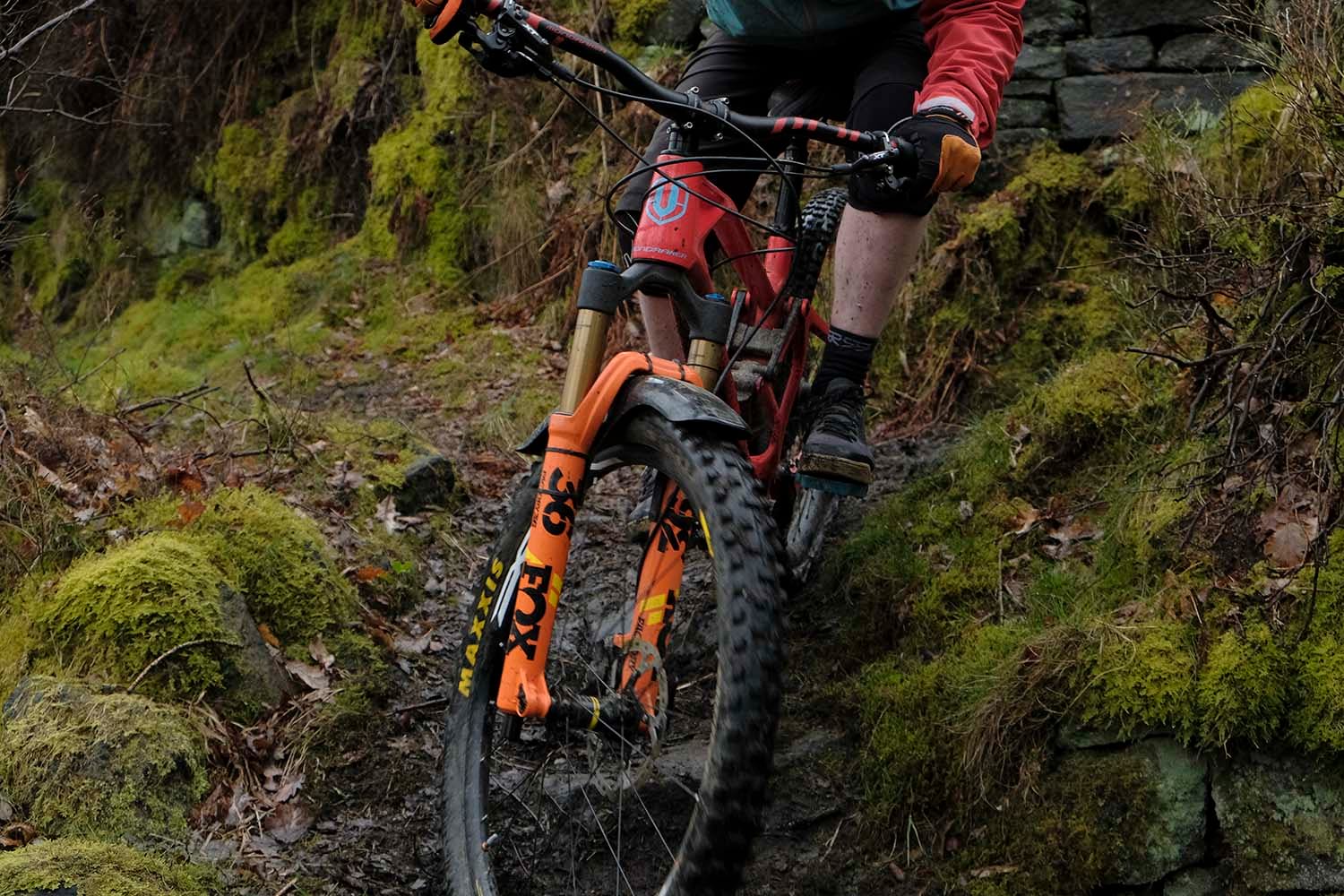I’m losing likes. My followers are dropping like flies. And my stats? Well, don’t even talk to me about my stats!
You see, like many of you reading this review, I live my entire life through Instagram. There isn’t a moment that goes by without me booting up the ‘Gram’ to get all social on my homies. I don’t post photos of my breakfast, lunch or dinner, I don’t post Boomerangs of my French Bulldogs, and I only occasionally pull out my best duck face and produce a selfie. No, what I normally post is photos of the bike that I’m riding or where I’m riding. And that’s made the past four weeks a little difficult.
You see, for the past month I’ve been under strict orders not to post photos of this bright orange Fox Factory 36. Because even though it looks like the current 2018 model that we reviewed earlier this year, this fork is actually from the future! 2019 to be exact.
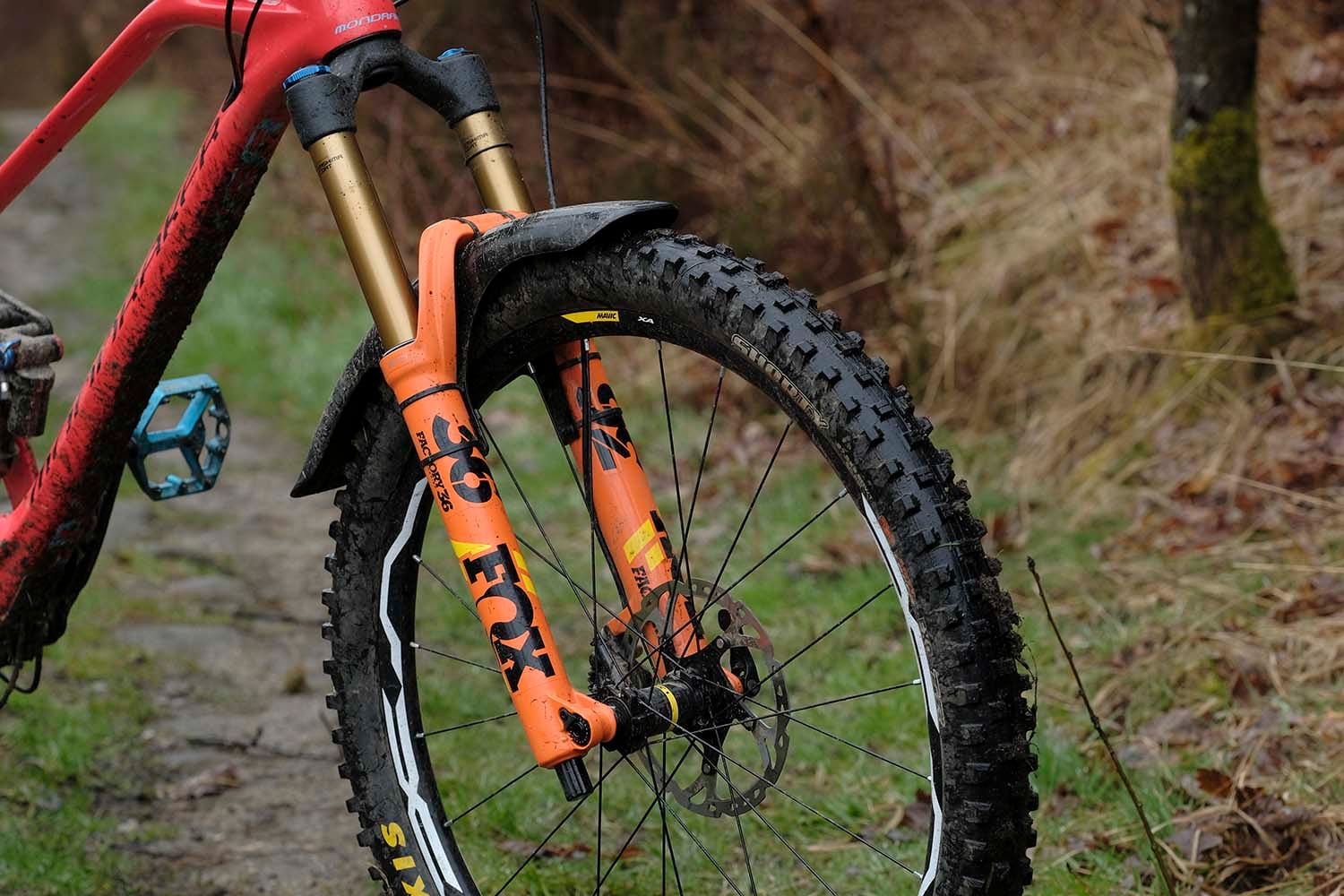
I’ve been riding the top of the range fork which features the all-new FIT GRIP 2 damper a new design that replaces the FIT RC2 damper found in both the 36 and Fox 40 downhill fork. Fox says that the new damper offers better sensitivity and better adjustment, with only a nominal 35g weight increase.
Let’s see if what they say is true.
2019 Fox 36 Float FIT GRIP 2 Fork Features
- Long-travel trail & enduro fork
- 36mm tapered aluminum stanchions w/Kashima Coat
- 27.5in and 29in chassis available
- Travel: 140-180mm (27.5in), 140-170mm (29in)
- Float EVOL air spring
- Damper: FIT GRIP 2
- Adjustments: air pressure, air spring volume, low-speed rebound, high-speed rebound, low-speed compression & high-speed compression
- Offset: 37mm & 44mm (27.5in), 44mm & 51mm (29in)
- Actual weight: 2.09kg
- RRP: £1139
FIT GRIP 2
Ok, so the 2019 Fox 36 is all new right? It’s got an all-new chassis and new colour, which is why I couldn’t share it on social media right? Well, actually no.

The chassis and EVOL air spring remain unchanged for the 2019 Fox 36 fork. The damper, however, has seen a huge update and Fox promises that the new 36 will be more sensitive than ever before.
To achieve this Fox has removed the original FIT RC2 damper and replaced it with the all-new FIT GRIP 2 cartridge. The difference here is that the FIT RC2 damper was a hermetically sealed system that used a cartridge seal head to ensure that no oil or air would get into the cartridge. In short, all the damping oil and gubbins was housed inside a rubber bladder, which would expand as the fork compressed. Over the years Fox managed to reduce a lot of the friction associated with this design, but as forks got bigger and longer travel, the limits of the system were starting to be met.
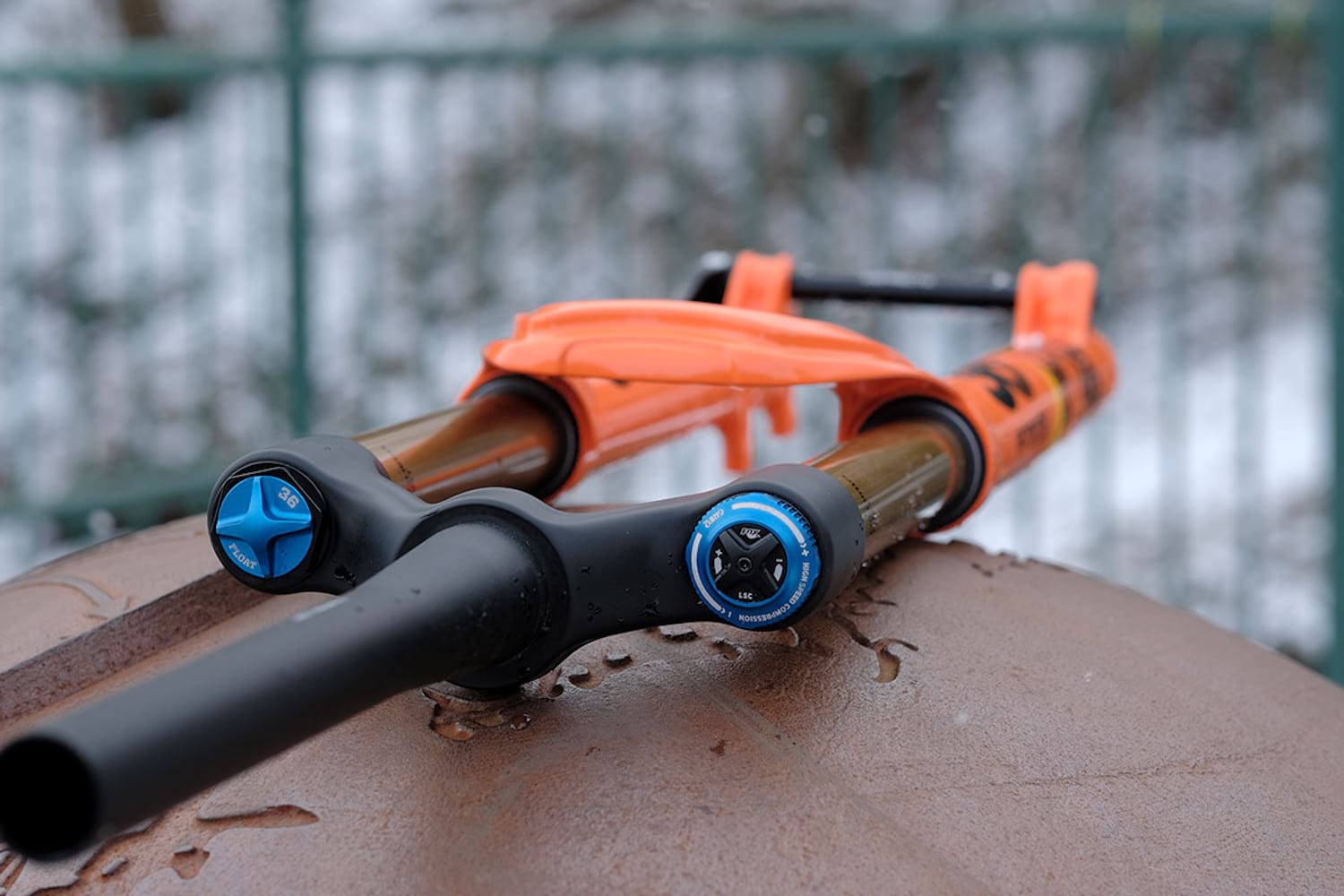
The new FIT GRIP 2 damper ditches the traditional sealed bladder in favour of a semi-open cartridge that actually draws parallels with the cheaper GRIP damper – hence the name. However, GRIP 2 is still considered a closed system, though it uses bleed ports that allow for movement of oil, meaning that the system can never be overfilled (something that could happen with the FIT bladder during damper servicing). The self-bleeding nature of the damper meant that Fox could design the seal head with fewer seals, resulting in greater sensitivity.
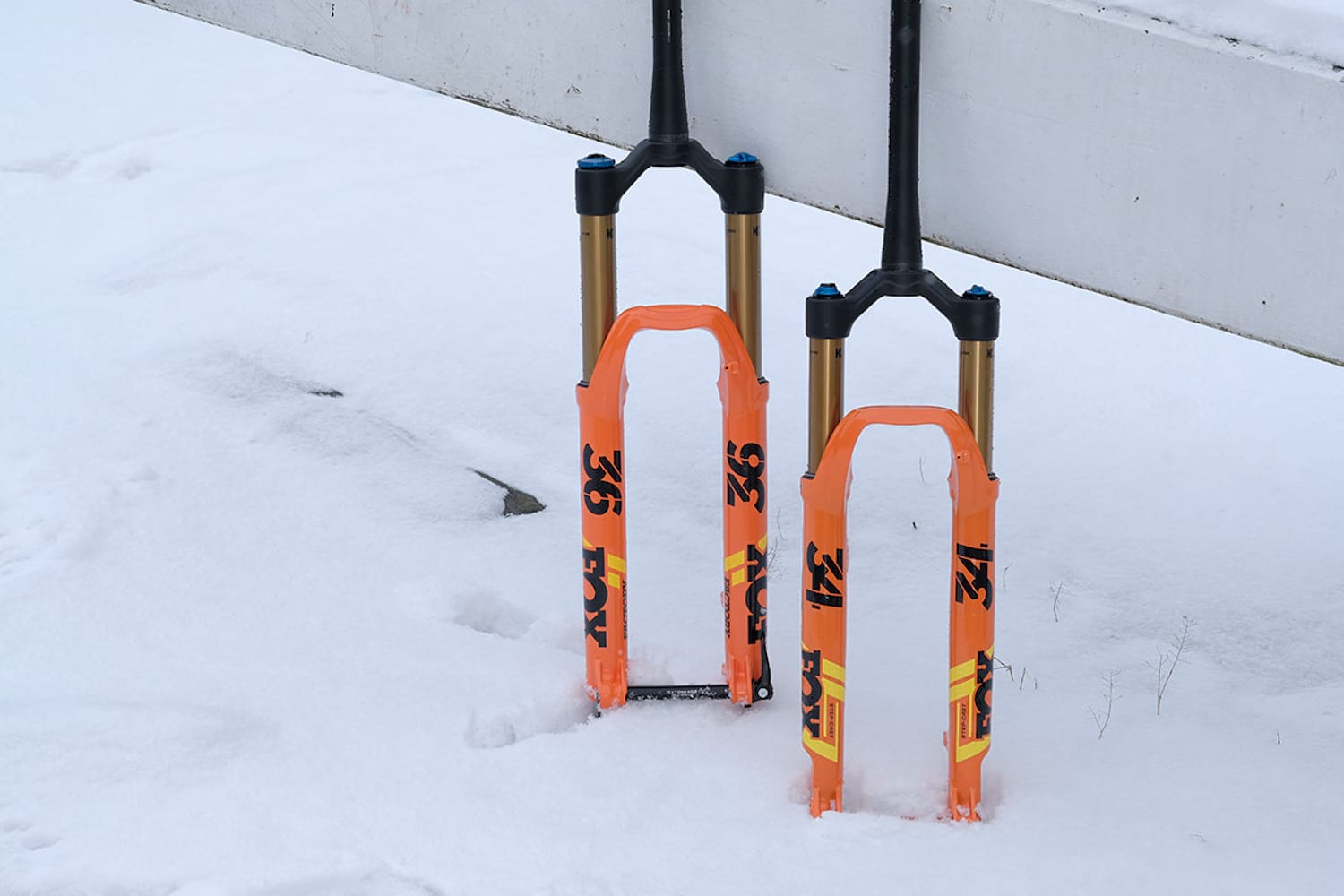
This does mean that the new system uses the same oil for damping and lubrication, as with older Fox forks and cheaper open bath forks from other brands. Now this might trigger alarm bells, as these older ‘open’ style systems did require more maintenance and more frequent service intervals. Fox says this isn’t the case with the new FIT GRIP 2 damper though, since advancements in wiper seal technology and performance mean its recommended service intervals are (funnily enough) exactly the same as the previous FIT RC2 damper.
The new system also gets a larger diameter damper tube, which means a whole lot more room for more damping oil – approximately 300% more. Along with the higher oil volume, there’s also more oil flow throughout, which promises improved sensitivity and consistency.
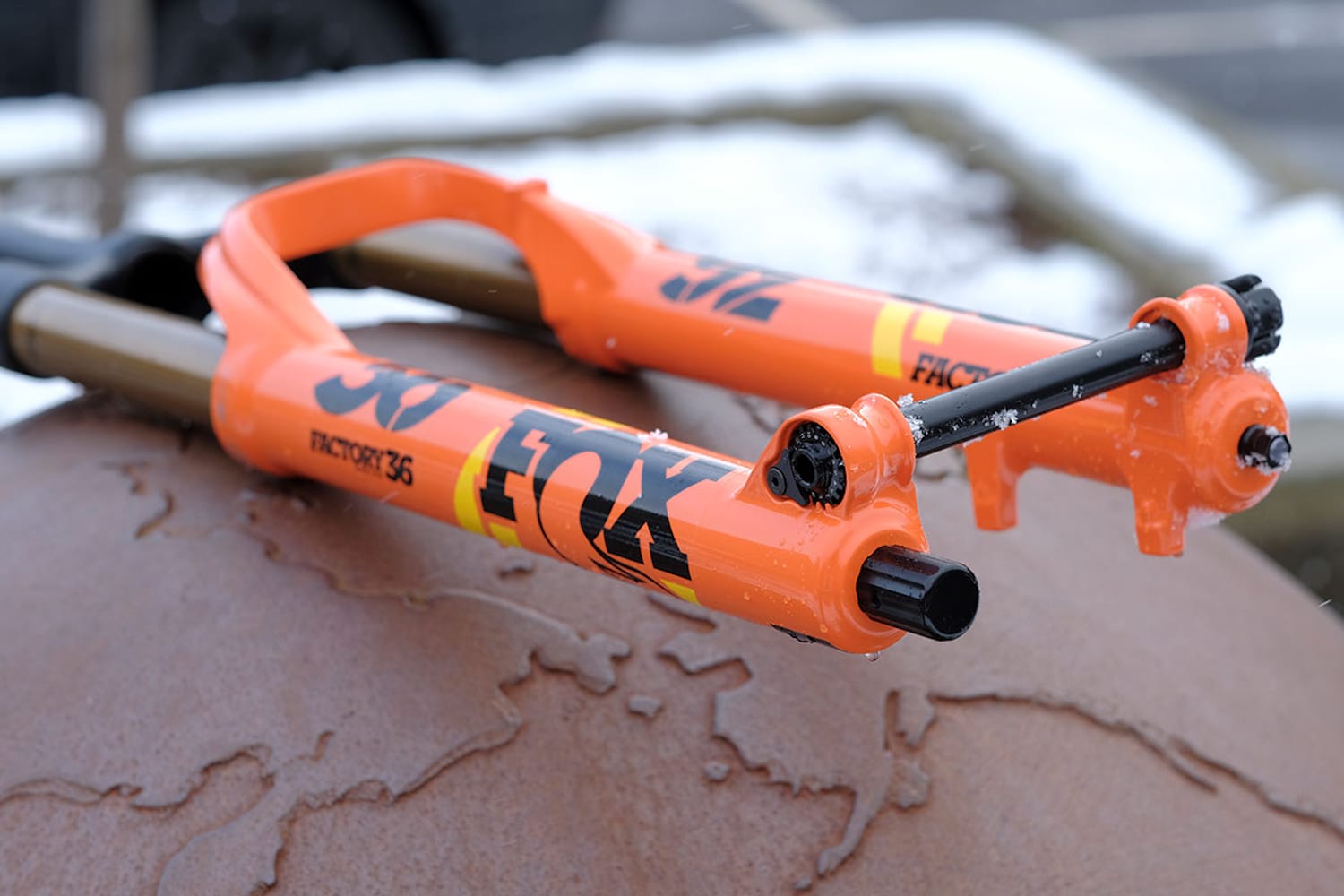
One of the new innovations inside the 36 FIT GRIP 2 damper that Fox is particularly proud of is the introduction of Variable Valve Control. This gives the fork high-speed rebound control – something that previously needed to be adjusted internally at the piston. In contrast, the new system features an additional knob on at the bottom of the right-hand leg to provide tool-free external adjustment of high-speed rebound damping. You’ll notice that there are two rebound controls, one on top of the other. High-speed is located nearer the fork leg with low-speed adjustment above it.
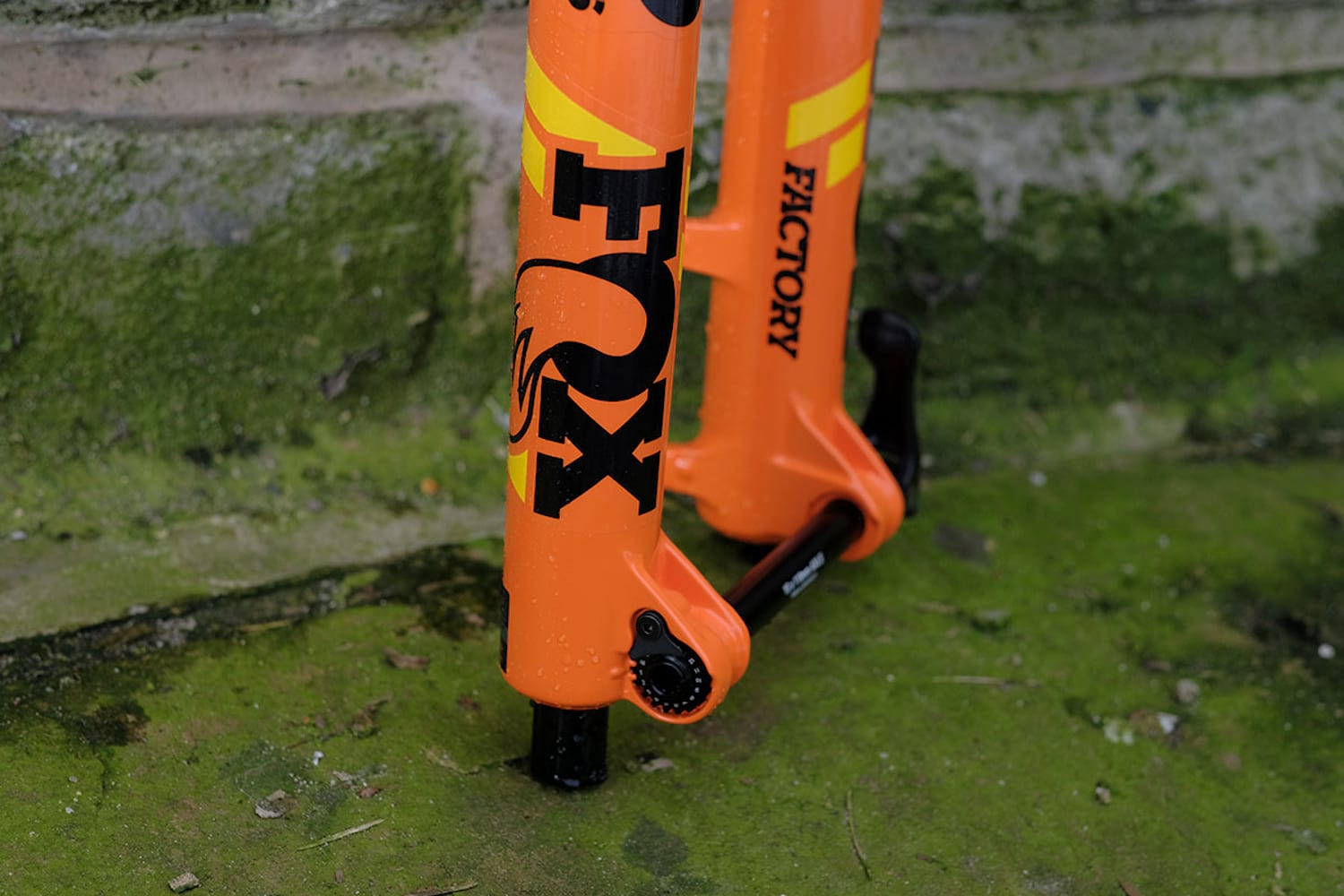
But it isn’t just the adjustability that’s of interest though. It’s the fact that this function has been achieved with entirely new technology for Fox Racing Shox, and one that has been pioneered inside by the MTB division. There’s currently a patent application in both the US and Europe for the Variable Valve Control system, and it’s likely that we’ll see the design popping up in testing soon with Fox’s powersports divisions.
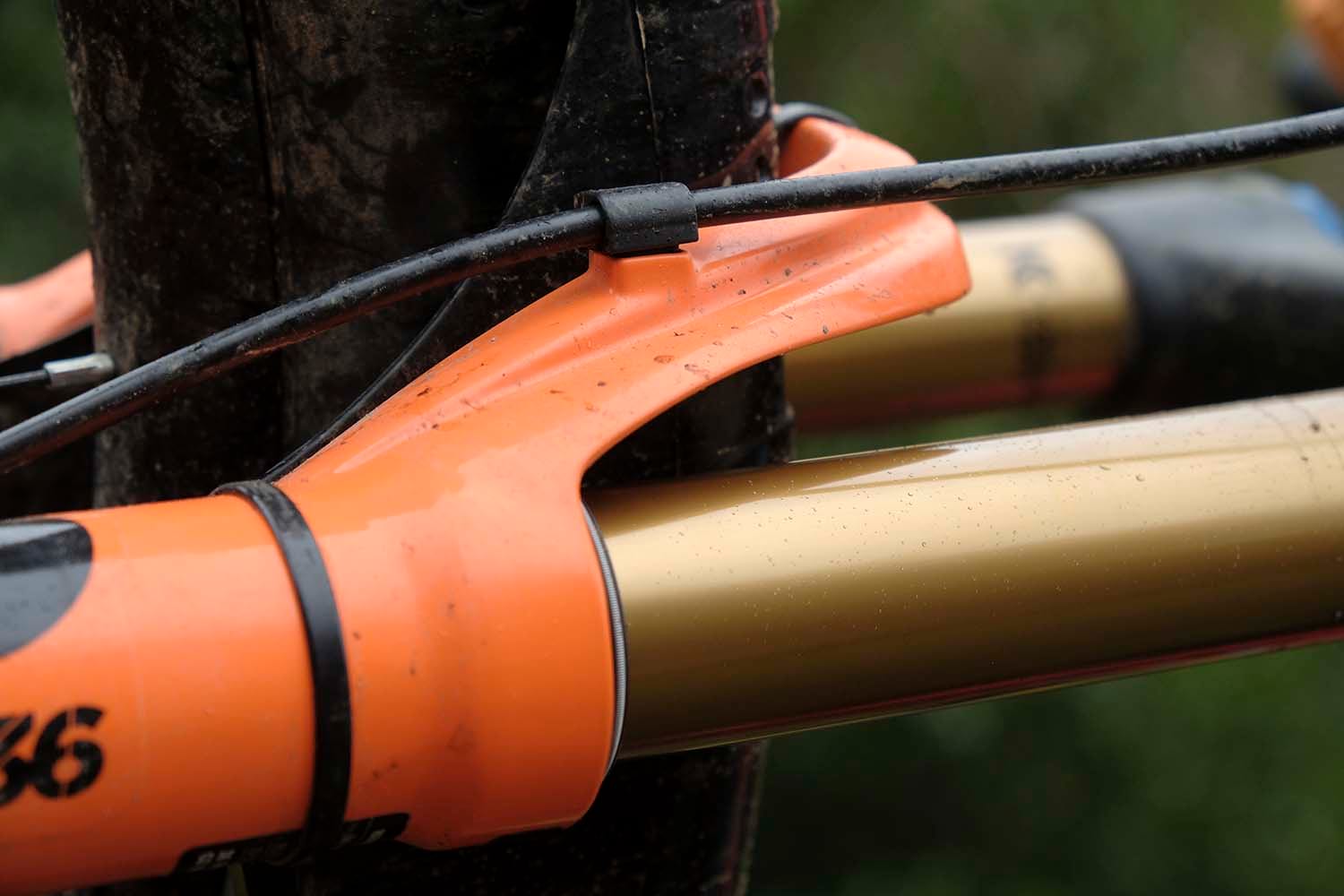
There have also been changes made to the compression side of the fork which now uses a ‘pre-bending’ shimstack that eliminates that harsh feeling that the older RC2 suffered from. What’s really impressive is that all of these adjustments work independently from one another meaning you can fine-tune one setting without upsetting the forks performance elsewhere.
Setting Up
To get an idea of how the fork would perform in different situations I installed it firstly on a 2018 Canyon Spectral, and then on a 2018 Mondraker Foxy.

This being a flagship suspension product there are plenty of nobs to twiddle so that you can get the fork performing just how you want it to on the trail. If you’re coming from a fork with fewer settings you might feel a little overwhelmed or even unsure how to go about setting up the 36, but thankfully Fox has made the whole process super simple.
Once you’ve installed the bright orange beauty into your bike, the first thing to set is the sag. So you’re not left thumbing through the entire 36 user guide, Fox has printed air pressure suggestions on the back side of the left fork leg. With 160mm of travel, I decided to go for 30% sag.

With your air pressure set and your sag where you want it to be you then simply follow the table to get your rebound settings right. Split rebound damping can be a little intimidating, but according to Fox the rebound settings are largely based on air pressure. Less pressure = less rebound damping, and more pressure = more rebound damping. Fox is pretty confident with its base settings and believes that you’ll only be a couple of clicks away from perfection if you follow the settings for your rider weight and air pressure. Once set, you really shouldn’t need to touch them again.
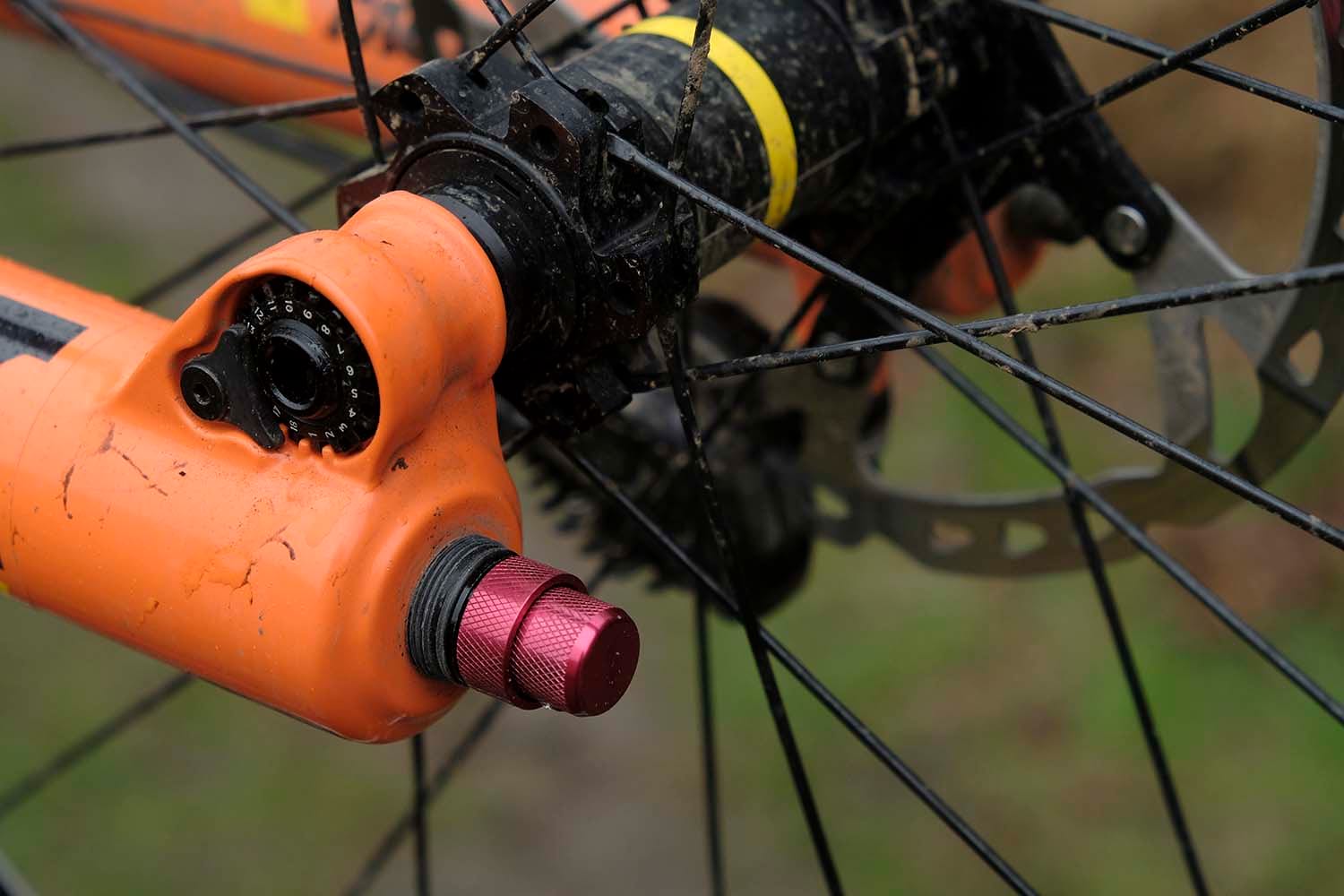
I tested the 36 with Fox’s recommended settings first and it felt amazing. But I couldn’t help spin the dials a few turns to see how it would change things. I learned two things from this; 1) the adjustments on the new 36 make real changes to the forks action and 2) Fox really has those base settings dialed. After experimenting a few times I ended up back on the suggested Fox settings and didn’t touch them again.
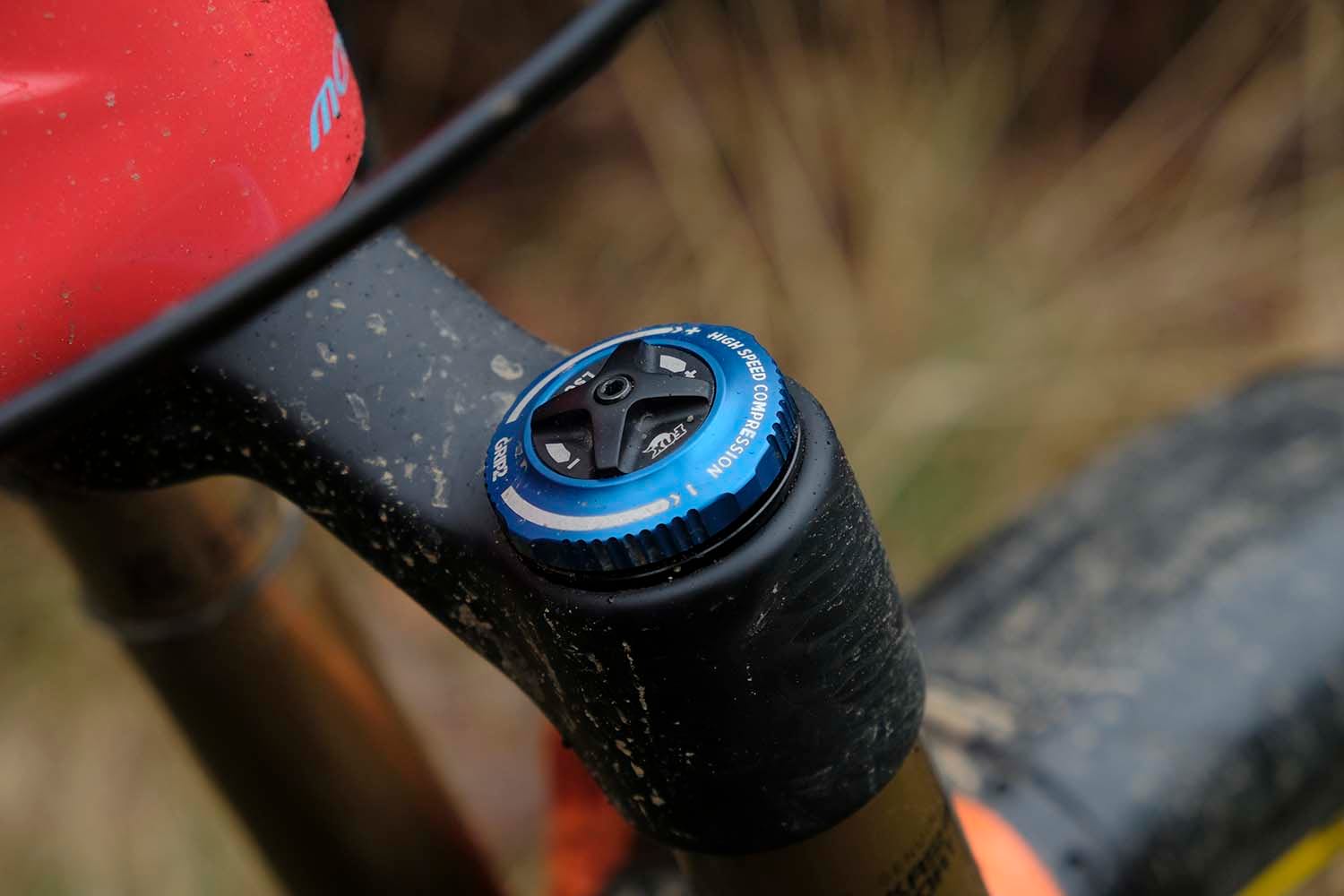
While rebound tends to be set-and-forget, compression settings are more down to personal preference and are usually the adjustments that will get tweaked the most throughout a ride. Personally, I went for 5 clicks of high-speed compression and alternated between 3 and 6 clicks of low-speed depending on if I was winching up a long rocky climb or pumping through berms and jumps.
On The Trail
Straight away you can certainly feel that the 2019 Fox 36 is more sensitive and happier to move into its travel. Those fewer seals in the damper make for a fork that is happier to patter over small trail obstacles, and it felt super smooth right out of the box.
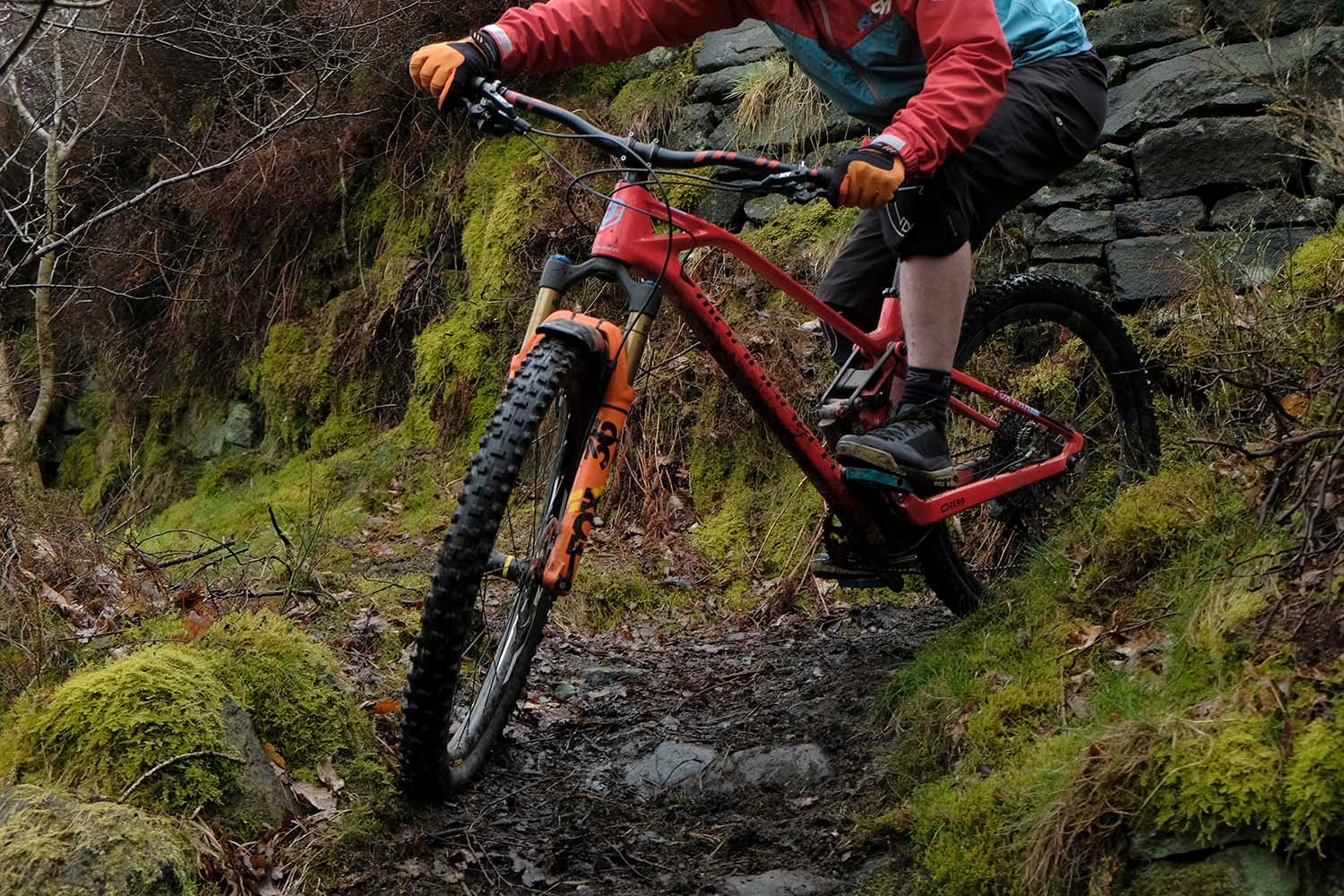
This eagerness to move means that the fork is very active even when climbing seated, so it’s important that you get those low-speed compression settings dialled. As mentioned above, I found that I had to add a few clicks of low-speed compression when out of the saddle and riding on smoother trails, but since this setting is found at the top of the right fork leg, it’s easy to get to for live adjustments.
The addition of separate low and high-speed rebound is a real improvement on the new 36 too. With that new super smooth damper happily soaking up the small bumps we now have low-speed rebound to keep that low-speed stuff under control, without hampering the faster, big hit performance of the fork.

Being a big travel enduro fork the Fox 36 is happiest when smashing through rough rocky sections or hitting steep chutes and berms. The fork is so good in these respects that you simply forget all about it and concentrate on the next rock section. The suspension action is of such quality that it gives you endless confidence to charge faster while also calming the trail down enough to give you time to think and plan for what’s coming next.
The two bikes that I tested the fork on both enjoy different styles of terrain and riding. Whereas the Canyon Spectral is a good all rounder that collects speed on even the slightest gradient, the Mondraker needs a little more body English and only really comes to life when things get steeper. The 36 though doesn’t mind where you ride, how you ride or how fast you ride, it simply performs faultlessly.
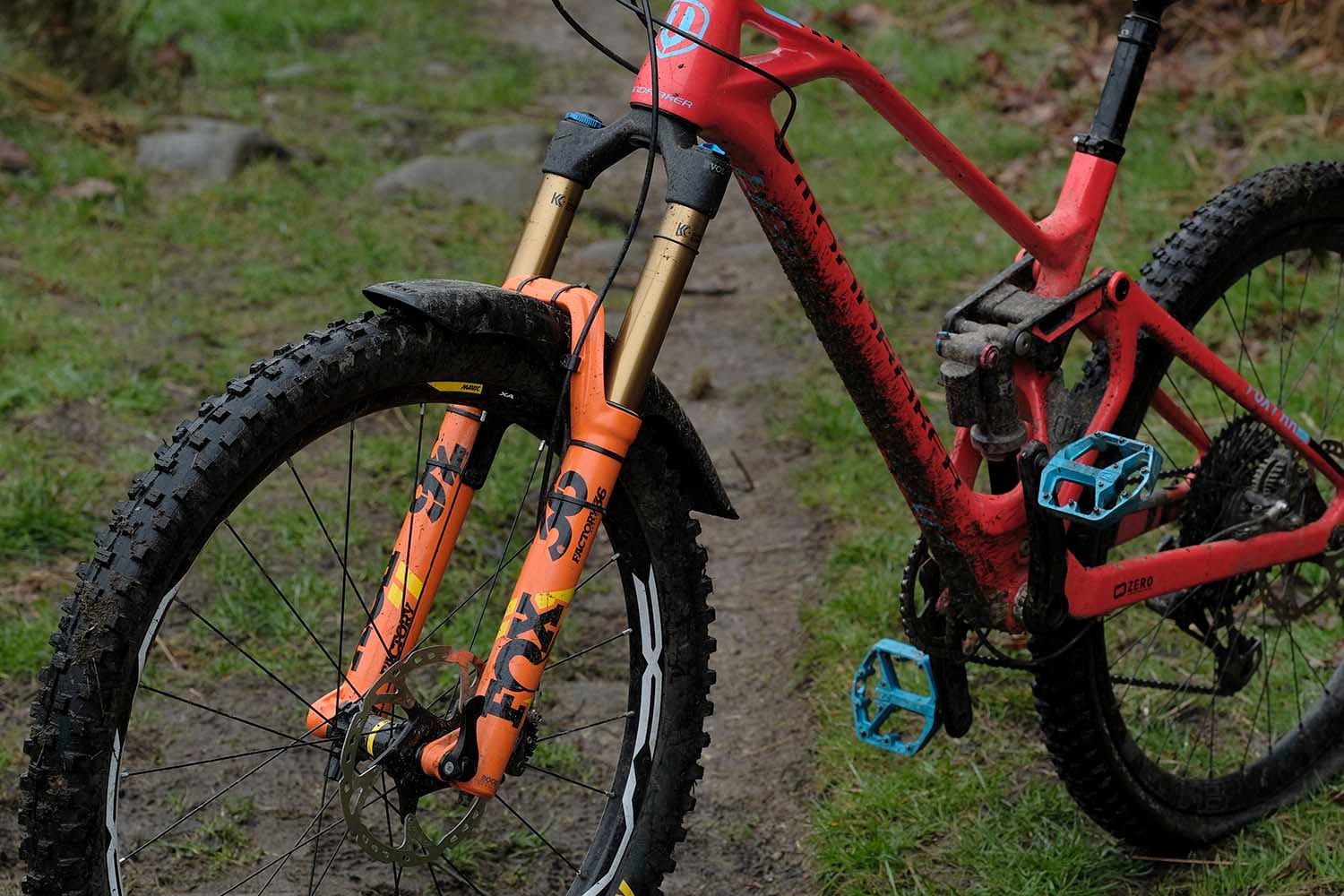
If you’re not into smashing through stuff then you’ll like the fact that the 36 is playful enough to have you jump over rock gardens instead. Whereas some forks can ramp up quite aggressively, the 2019 36 has a real balanced progression and again you don’t really notice the ramp up until you’re already flying through the air. With the confidence inspiring action and extra speed you can ride at you’ll appreciate the burly chassis when landing hard into sections you wouldn’t normally dream of.
It’s just as well that Fox has kept the burly 36 chassis unchanged for 2019 as the stiff legs combined with the incredible suspension action make for a monster confidence booster, one that has led me into a few situations that would have been pulling on the anchors on a less capable fork.

For comparison’s sake, I feel that the new 36 sits between a RockShox and DVO fork in feeling. RockShox forks tend to be quite lively and seem to hop from obstacle to obstacle, skipping meals if you will, whereas a DVO Diamond wants to eat each and every rock, bump and root that your wheel comes in contact with. The Fox 36 manages to give you the playfulness of the RockShox with a similar ground-hugging feel to a DVO, only it’s a much simpler fork to set up.
Overall
It’s difficult to put into words how a suspension product feels when reviewing it, it’s even more difficult when the product in question get’s on with its job so well that you tend to forget all about what it’s doing and instead lets you think about where your riding instead.
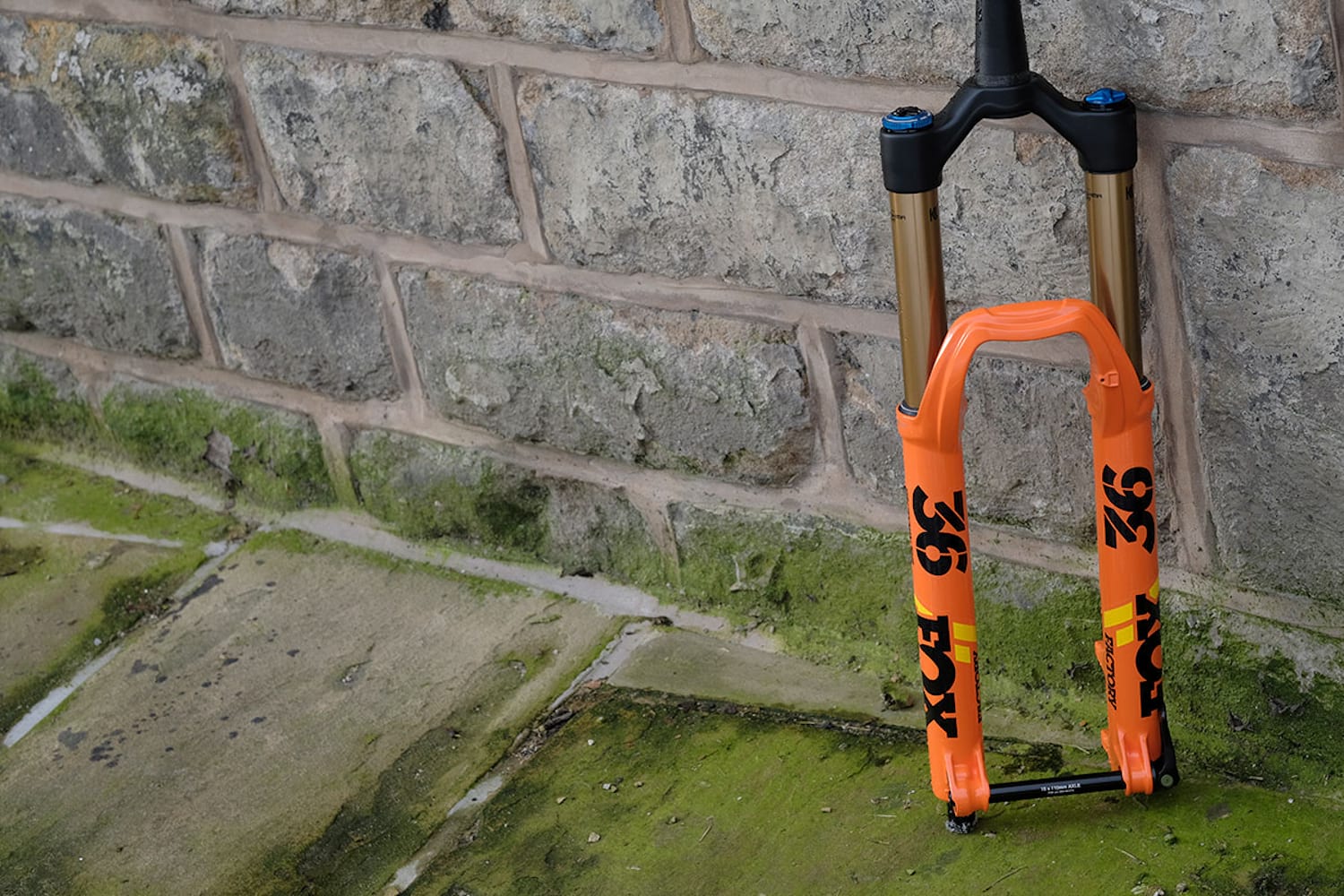
If I had to sum up the Fox 36 in just a few words they would be simple, smooth and stiff none of which are words that conjure up amazing visuals in your subconscious but they’re accurate adjectives for what is one of the best suspension forks I have ever ridden.
While it offers all the bells and whistles any top rider may want, Fox has made the 36 easy to set up and live with so even us mere mortals can enjoy the factory treatment without getting too techy. However, this performance does come at a cost and £1139 is a lot of money to spend on a fork no matter how good it is. If you’re not so bothered by the Kashima Coat stanchions, Silverfish will also be stocking the Performance Elite version that uses exactly the same chassis and internals with all-black stanchions for £100 less. And good news for those who own a current 2018 36 fork, as there’ll also be the option of upgrading the damper on its own – an upgrade that I feel is going to be very popular.

